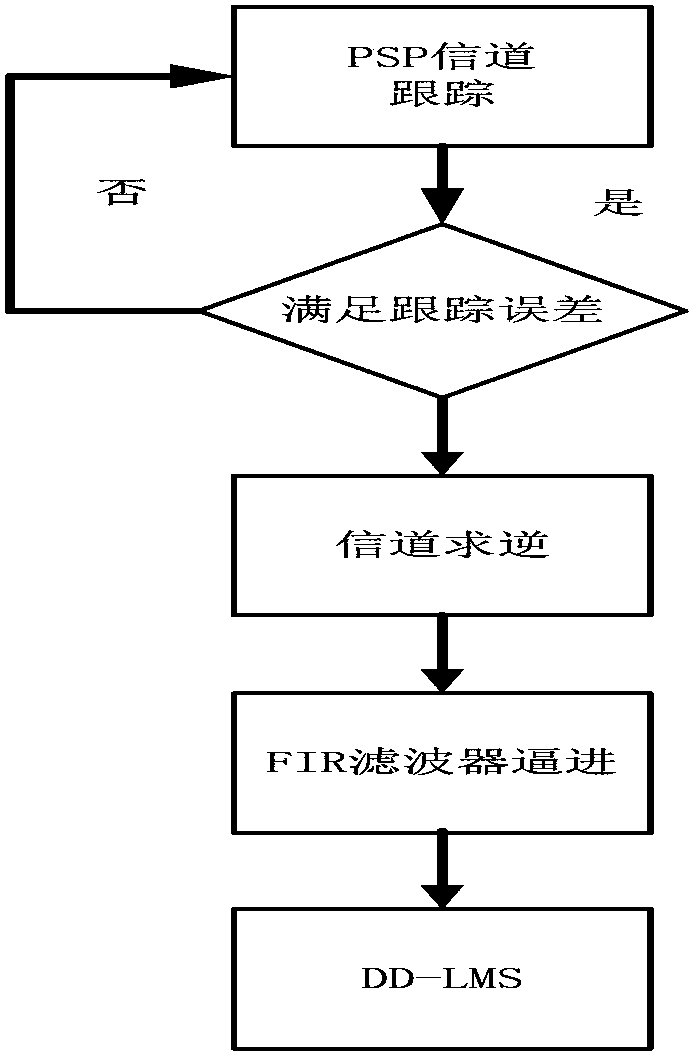A Blind Equalization Algorithm for Burst Signals
A blind equalization algorithm and burst signal technology, applied to the shaping network in the transmitter/receiver, baseband system components, etc., can solve the problem of slow convergence speed, poor tracking ability of fast-changing channels, and inability to adapt to the requirements of communication development and other problems to achieve the effect of reducing complexity, ensuring real-time processing performance, and achieving fast blind equalization
- Summary
- Abstract
- Description
- Claims
- Application Information
AI Technical Summary
Problems solved by technology
Method used
Image
Examples
Embodiment Construction
[0013] The technical solutions of the present invention will be further described below in conjunction with the accompanying drawings and embodiments.
[0014] see figure 1 A burst signal blind equalization algorithm shown, the blind equalization algorithm includes the following steps:
[0015] Fast channel estimation of the wireless channel is carried out by using the survivor sequence algorithm, and the forward channel parameter estimation is obtained;
[0016] According to the channel model of intersymbol interference, the receiving channel can be expressed as
[0017] z k = x k + w k = Σ m = 0 L - 1 a k - m f ...
PUM
 Login to View More
Login to View More Abstract
Description
Claims
Application Information
 Login to View More
Login to View More - R&D
- Intellectual Property
- Life Sciences
- Materials
- Tech Scout
- Unparalleled Data Quality
- Higher Quality Content
- 60% Fewer Hallucinations
Browse by: Latest US Patents, China's latest patents, Technical Efficacy Thesaurus, Application Domain, Technology Topic, Popular Technical Reports.
© 2025 PatSnap. All rights reserved.Legal|Privacy policy|Modern Slavery Act Transparency Statement|Sitemap|About US| Contact US: help@patsnap.com



